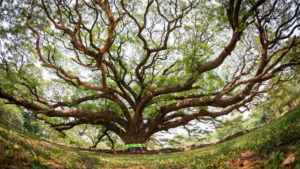
Symbols play an important part in most of the religions of the world. The Cross of Jesus is associated with Christianity, the Star of David is a symbol of Judaism, and so on. While many people of the Western world are familiar with the symbols of the Abrahamic religions, few are able to recognize a vast majority of those connected with Eastern religions. Buddhism, for example, includes a number of important symbols that can come across as foreign to people who are somewhat unfamiliar with the religion.
The Bodhi tree is one of the central symbols of Buddhism. If you want to learn a little more about this symbol and its importance, take a look at these facts you should know about the Bodhi tree.
Moment of Enlightenment
To truly understand why the Bodhi tree is held in such high regard, one has to take a leap backward in time to the origins of Buddhism. Roughly 2500 years ago, a man known as Siddhartha Gautama sat beneath a very old fig tree. Siddhartha is said to have sat beneath the tree and meditated for 49 days without moving. During this time, Siddhartha is said to have obtained enlightenment and begun to spread what he had learned. These teachings eventually took shape and became what is now known as Buddhism.
Since the Bodhi tree is the place where the Buddha found enlightenment, it was immediately considered a place of great respect. The tree was located at the Mahabodhi Temple in Bodh Gaya, India, and became a popular site for people to come and pay respects to the Buddha and all he was able to learn underneath its branches. King Ashoka was said to have held a festival each year to honor the tree. Unfortunately, this dedication is what would lead to the fall of the first Bodhi tree.
Plant and Plant Again
King Ashoka’s wife, Tissarakkha, was a very jealous person. According to various texts, she was incredibly unhappy with the amount of attention Ashoka gave to the Bodhi tree. After Ashoka passed away and Tissarakkha became queen, she ordered the tree to be killed by way of poisonous thorns. The tree where Siddhartha Gautama had attained enlightenment died. Still, this was not the end of the Bodhi tree. The tree regrew, and a monastery was built there to honor the tree, with reports of thousands of monks visiting the temple each year.
This was not the end of the struggles for the Bodhi tree. It was cut down multiple times over the centuries. It was struck down by King Pushyamitra Shunga and several hundred years later by King Shashanka. One Bodhi tree was crippled by time in 1876. British archaeologists occupying India at the time wrote that the tree had died during a storm due to how decayed it had become. Following tradition, archaeologist Alexander Cunningham planted a new Bodhi tree on the same spot.
Trees Everywhere
Though descendants of the tree where the Buddha was enlightened remain on the same spot as the original, various sources suggest there are descendants of the original Bodhi tree all over. Certain texts state that the Buddha allowed seeds from the tree to be transported all over to various temples and holy sites. Though some locations are purely speculative, others have been confirmed and are viewed as sacred places.
Symbols play a large part in understanding a religion. The Bodhi tree serves as a literal reminder of the spot where the Buddha became enlightened as well as a symbol of resilience. Each time the tree was cut down, it came back. By learning about the various symbols associated with other religions, you can learn a lot about the history of the world and all who have come before.

